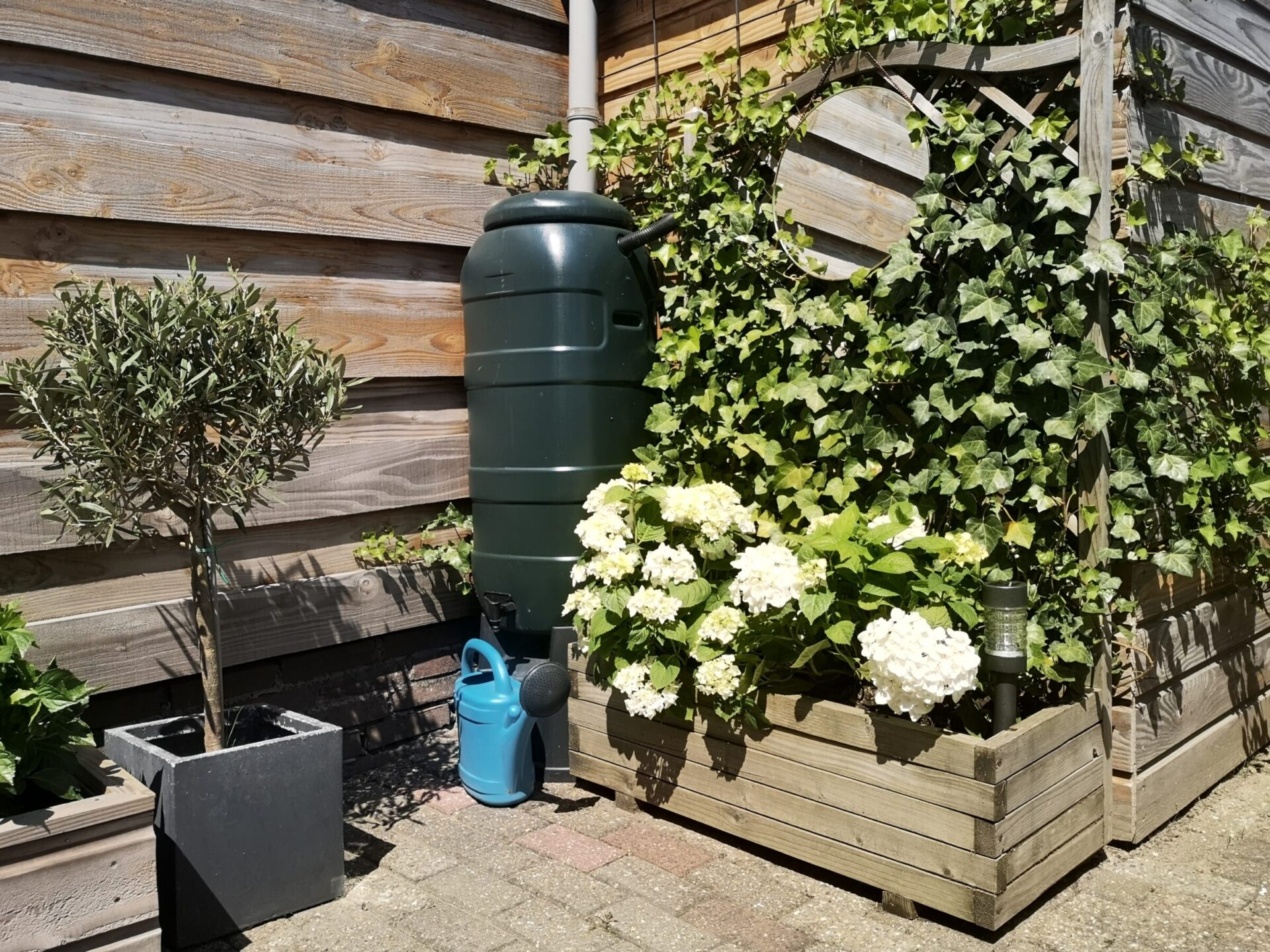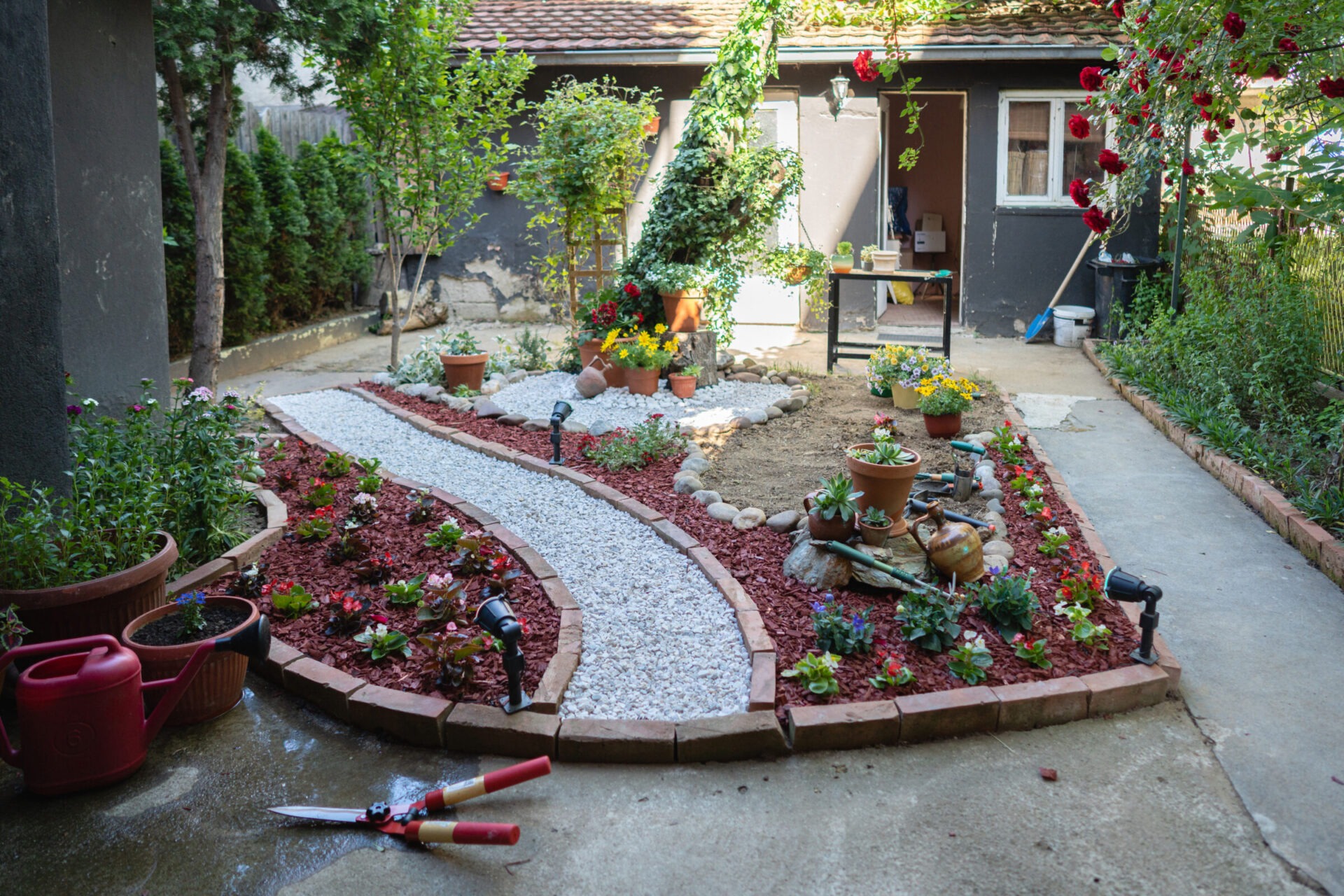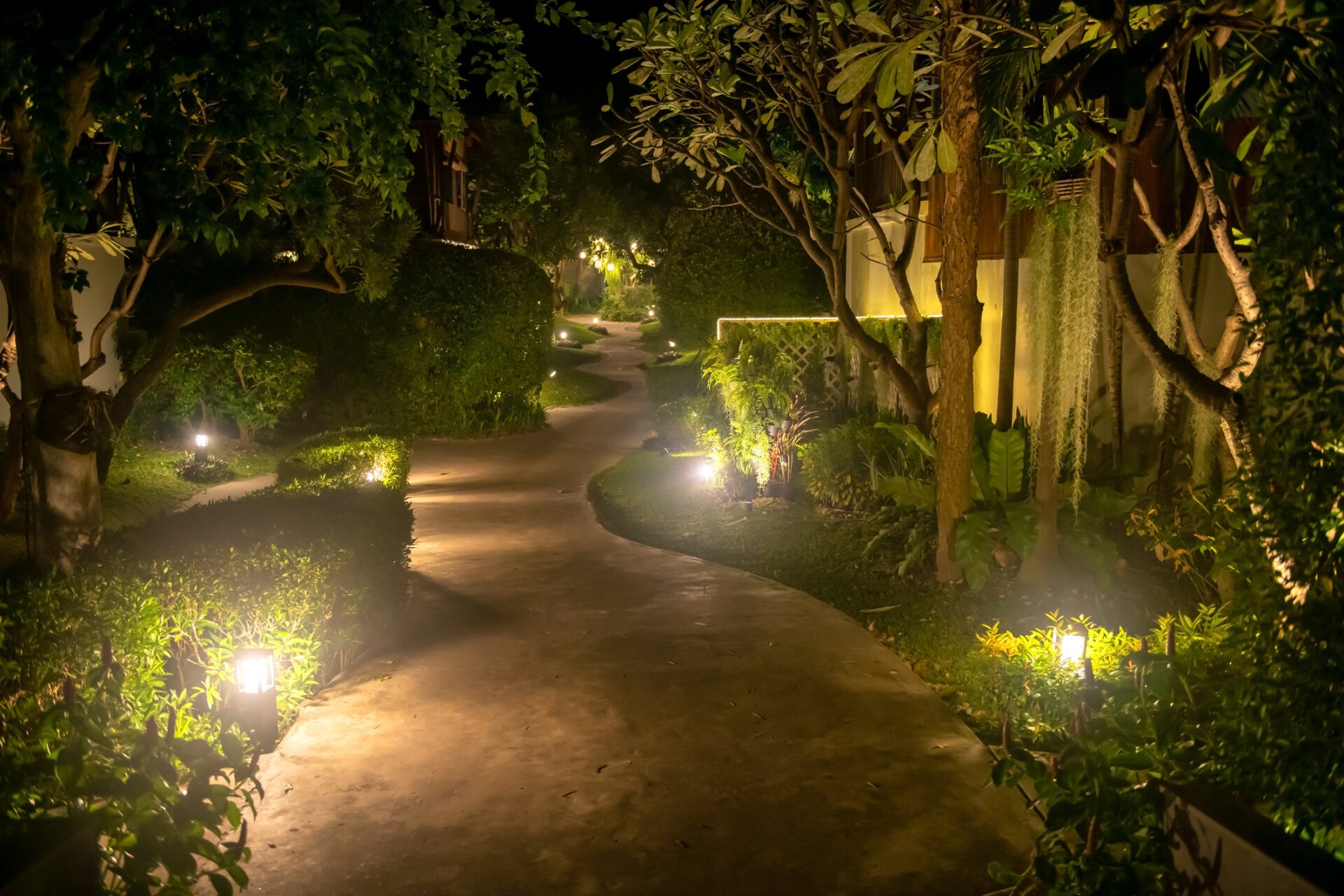Creating Sustainable Outdoor Spaces: Eco-Friendly Landscaping in the GTA

Many people dream of a beautiful outdoor space, but the reality of maintaining a traditional landscape in the GTA often brings hidden headaches. The constant battle with skyrocketing water bills, the endless hours spent mowing and weeding, and the nagging concern about the environmental impact of chemical fertilizers and pesticides can turn your dream yard into a source of frustration. Are you tired of feeling like your garden is costing you more than it gives, both financially and environmentally?
Imagine an outdoor space that demands less, yet gives back more. Picture a landscape that thrives with minimal water, requires significantly less upkeep, and actively contributes to a healthier local ecosystem. This isn’t just a fantasy; it’s the tangible benefit of sustainable landscaping in the GTA.
Alterra Landscaping offers a path to this reality. We specialize in creating eco-friendly outdoor spaces that harmonize beauty with nature, reducing your environmental footprint while enhancing your lifestyle. From native plant selections that conserve water and attract beneficial wildlife to smart irrigation systems and permeable hardscaping, we design and build landscapes that are both stunning and sustainable. Let Alterra Landscaping transform your outdoor area into a vibrant, low-maintenance oasis that benefits your wallet, your time, and the planet.
Why Sustainable Landscaping Matters in the GTA

Sustainable landscaping isn’t just environmentally responsible; it benefits your wallet and lifestyle:
- Conserve Water and Cut Costs: Traditional lawns and gardens can guzzle a lot of water. You’ll conserve water and reduce your utility bills by embracing environmentally friendly practices. Smart plant choices and irrigation can significantly decrease water usage, which is a relief on those summer water bills. Indeed, water-wise gardening has become so crucial that the City of Toronto now mandates that new developments incorporate a minimum of 50% native and drought-tolerant plants in their landscaping..
- Reduce Maintenance Effort: A sustainable landscape often means working with hardy, native species and efficient designs that don’t need constant care. Think of fewer hours mowing and weeding, and more time enjoying your yard. Native plants thrive with minimal intervention, and features like mulched beds or groundcover in place of high-maintenance lawn can save you some weekend work. Over time, you’ll also spend less on fertilizers, pesticides, and gas for mowers.
- Support the Environment: Every sustainable choice in your yard helps the local ecosystem. Native trees, shrubs, and flowers provide food and shelter for birds, butterflies, and beneficial insects, boosting biodiversity. Permeable paving and rain gardens reduce stormwater runoff, helping prevent local flooding and easing strain on city sewers. By ditching chemicals, you keep soil and waterways cleaner. In short, your yard can become a small but mighty part of Toronto’s environmental solution. And as a bonus, an eco-friendly landscape creates a safer outdoor space for your family and pets by avoiding harsh pesticides.
Eco-Friendly Lighting & Amenities
Efficient outdoor lighting choices further enhance your sustainable landscape:
- Solar and LED Lighting: Replace traditional lighting with solar-powered or LED options. These significantly reduce energy use and maintenance.
- Sustainable Materials: Incorporate FSC-certified or recycled composite materials in outdoor structures like decks and pergolas.
These thoughtful choices elevate your landscape’s eco-friendly appeal without compromising on aesthetics or functionality.
Smart Water Management
Effective water management practices make your landscape resilient to GTA weather fluctuations:
- Drip Irrigation and Smart Systems: Replace conventional sprinklers with drip irrigation or smart controllers, significantly reducing water use by delivering precise hydration directly to plant roots.
- Rainwater Harvesting: Collect rain in barrels or cisterns for future irrigation. This method conserves municipal water and provides chemical-free hydration for plants.
- Rain Gardens and Permeable Paving: Incorporate rain gardens and permeable surfaces into your landscaping. These designs effectively manage stormwater runoff, preventing local flooding and reducing strain on Toronto’s drainage infrastructure.
Sustainable Hardscaping & Lawn Alternatives
Eco-conscious choices extend to patios, paths, and lawns:
- Permeable Surfaces: Choose interlocking permeable pavers or natural stone, allowing rainwater to seep through, reducing runoff and aiding groundwater recharge.
- Recycled and Local Materials: Opt for locally sourced or recycled materials for your landscape projects. This reduces carbon footprints and supports local economies.
- Rethinking Lawns: Downsize high-maintenance grass areas by integrating drought-tolerant groundcovers, eco-lawns, or native gardens. Smaller lawns reduce resource use, maintenance time, and costs.
Alterra Landscaping specializes in sustainable hardscape solutions tailored for GTA residents, combining durability with environmental stewardship.
Embrace Native Plants & Pollinator Gardens

One of the foundations of eco-friendly landscaping is using native plants in your garden. In Southern Ontario, native plants have adapted to the local climate, soil, and seasons. Compared to exotic species, they demand significantly less maintenance, requiring less watering, fewer fertilizers, and minimal pest control, yet they flourish year after year. For example, native perennials like black-eyed Susans or purple coneflowers will bloom brightly through Toronto summers with little more than rainfall, while non-native ornamentals might wilt without constant care.
Planting natives doesn’t just save you effort; it supports local wildlife in a big way. Native flowers, grasses, and trees offer a natural habitat for songbirds, bees, butterflies, and other helpful creatures. By creating a pollinator-friendly garden, you’re offering nectar and pollen for bees and butterflies, seeds and berries for birds, and shelter for small animals. Imagine monarch butterflies fluttering around milkweed in your yard, or cheerful goldfinches feasting on native coneflower seeds; a sustainable landscape buzzes with life!
To start, consider integrating a variety of native species into your design. Combine various flowering plants with staggered blooming cycles to provide a steady supply of nectar and pollen for pollinators. Include native shrubs and trees (like serviceberry, red osier dogwood, or Canadian hemlock) that not only handle our cold winters and hot summers, but also add year-round interest (spring blossoms, summer greenery, fall colors, or winter berries). These choices create a rich, resilient plant community that’s beautiful and ecologically valuable.
A well-planned native plant garden can be as elegant and colourful as any formal flowerbed. The key is selecting the right plants for the right places (sun, shade, soil type) and grouping them in pleasing combinations. If you’re not sure where to begin, a professional landscape designer can help you choose native plants that suit your style and property conditions. By going native, you’ll cultivate a gorgeous garden that practically takes care of itself and gives back to nature.
Welcoming Local Wildlife

A sustainable outdoor space isn’t just about plants, it’s about the whole ecosystem, including the wildlife that visits or calls your yard home. Inviting birds, butterflies, and beneficial insects into your garden can make it healthier and more vibrant. Nature becomes your partner in maintaining the landscape. Here are some ways to create a wildlife-friendly garden in the GTA:
- Plant a Variety of Habitats: Just as you enjoy a comfy home, wildlife appreciate a variety of niches in your yard. Incorporate a mix of plants; trees, shrubs, flowers, and even some “wild” areas; to provide food, shelter, and nesting spots. To provide a continuous supply of nectar from spring to fall, plant native flowering plants that have staggered bloom times. Fruiting shrubs or sunflowers can offer seeds and berries for birds as the seasons change. If you have the space, dedicate a corner of your yard to nature. An untamed area with leaf litter or a brush pile offers refuge for small creatures such as toads, salamanders, and overwintering insects. Even a small pollinator garden or a patch of native wildflowers can become a busy feeding station for bees and butterflies. To help wildlife move safely and find what they need, plan plantings as communities rather than isolated specimens. This creates natural “habitat corridors.”
- Provide Water and Shelter: Besides food from plants, wildlife need fresh water and safe shelter. A bird bath or shallow water feature will attract birds and pollinators looking for a drink or a quick bath. Make sure to refresh the water often to keep it clean (and discourage mosquito larvae). For shelter, birdhouses or bee hotels can give beneficial species a place to raise young. Consider installing a few birdhouses suited to native species (like a wren house or chickadee house); they can be fun to watch in spring and help naturally with insect control (those parent birds will catch lots of bugs to feed their babies!). Planting evergreens or dense shrubs provides year-round cover where birds can roost or hide from predators. Even a small brush pile in a hidden spot can be a lifesaver for wildlife on cold winter days.
- Welcome the Birds and Butterflies: To specifically encourage pollinators, choose native wildflowers rich in nectar: milkweeds for monarch butterflies, bee balm and echinacea for bees, and flowering herbs like lavender or mint, which many pollinators love. A butterfly garden with the right host plants (e.g., dill or parsley for swallowtail caterpillars) creates a full life-cycle haven. For birds, try to include at least one berry-producing shrub (serviceberry, viburnum, or elderberry are great picks) so they have natural food sources. Hummingbirds, which visit Toronto in summer, will happily sip from red bee balm, trumpet honeysuckle, or cardinal flowers in your garden. By embracing wildlife, you’ll find your garden comes alive with activity; butterflies dancing between blooms, hummingbirds zipping by, and cheerful birdsong to greet you in the morning.
Remember, a wildlife-friendly landscape works best when you avoid chemicals (as mentioned above) and let nature maintain its own balance. You might be surprised at how pests are kept in check by the very critters you attract; for instance, birds and ladybugs munch on aphids, and bats (if you’re lucky to have them around) devour mosquitoes. Your role is simply to set the stage: plant thoughtfully, provide a few amenities, and then enjoy the show. Not only will you be helping urban wildlife, but you’ll also gain endless enjoyment from watching nature up close, right in your backyard.
Natural Soil & Landscape Care
Maintaining healthy soil naturally reduces reliance on chemical products:
- Organic Amendments: Compost and mulch naturally enrich the soil, retaining moisture and supporting plant health.
- Chemical-Free Practices: Avoid pesticides and herbicides, opting instead for beneficial insects, manual weeding, or organic pest treatments.
- Waste Reduction: Reuse yard waste as compost or mulch, minimizing landfill contributions and creating a self-sustaining garden ecosystem.
Professional Sustainable Landscaping in the GTA
Transitioning to a sustainable landscape may seem complex, but professionals simplify the process. Alterra Landscaping offers specialized expertise, seamlessly integrating sustainable elements into residential and commercial projects. With their guidance, you’ll achieve a vibrant, low-maintenance outdoor space tailored precisely to your site and lifestyle.
Explore Alterra’s comprehensive Landscape Design & Build Guide for insights into eco-conscious landscaping trends and practices in Toronto.
Ready to create your sustainable oasis? Contact Alterra Landscaping today. Together, we’ll transform your outdoor space into a beautiful, eco-friendly environment that’s perfect for your lifestyle and the planet.
Tags: